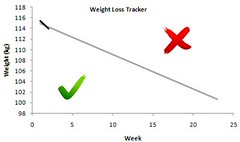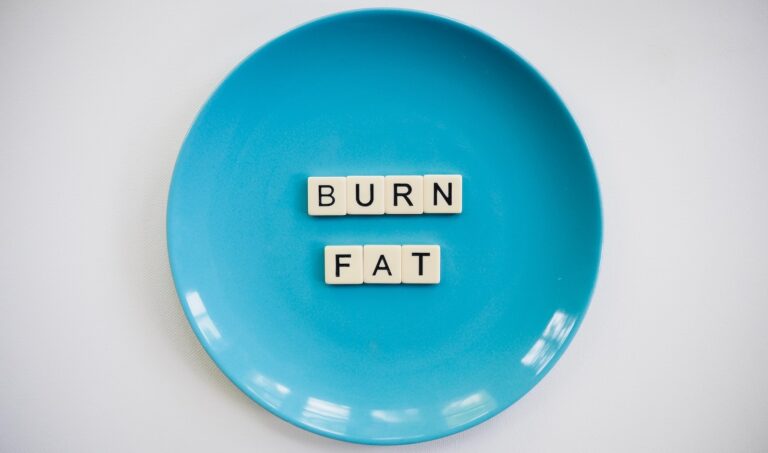How to Set SMART Goals for Your Weight Loss Journey
Are you tired of starting a weight loss journey only to give up after a few weeks? Have you ever set unrealistic goals that left you feeling discouraged and unmotivated? It’s time to change that! In this post, we will show you how to set SMART goals for your weight loss journey. You’ll learn the keys to making achievable, realistic, and sustainable goals that will keep you on track and motivated towards your desired body transformation.
Get ready because by the end of this post, you will be equipped with all the tools necessary to create an effective weight loss plan!
What is SMART Goal-Setting?

How to Set SMART Goals for Your Weight Loss Journey?
Setting and achieving healthy, achievable goals has long been considered one of the key principles of successful weight loss. And according to the so-called “SMART” model (specific, Measurable, Achievable, Relevant, Time-bound), goals should meet at least four criteria:
- They must be specific. You don’t want your goal to be something like “lose 10 pounds by summertime”; you need a numeric target that’s measurable (for example, losing one pound each week).
- They must be achievable. No matter how motivated you are – or how much time and effort you put in – if your goal is out of reach, it won’t help you achieve your weight loss targets. So make sure your goal is realistic and within your reach.
- They must be relevant to your weight loss goals. Having a relevant goal means that it focuses on what will help you achieve your ultimate objective – getting healthier and thinner bodies. So make sure your goal lines up with what matters most when it comes to reaching your fitness goals: eating foods that provide nutrients and calories that will help fuel your workouts, drinking enough water daily.
Why SET SMART Goals for Your Weight Loss Journey?
If you want to achieve long-term success in your weight loss journey, setting SMART goals is key.
What are SMART goals?
Smart Goals are Specific, Measurable, Achievable, Relevant and Time-bound.
When setting weight loss goals, it’s important to be as specific as possible. The more specifically you can describe your goal, the easier it will be to measure progress and stay on track. Being measurable helps you track your progress and ensure that you’re making real headway. And don’t forget the importance of timeframe — setting a weight loss goal that’s too ambitious may lead to frustration or failure. As long as your goal is realistic and achievable, it’s good to go!
Once you’ve formulated your SMART goals, make sure they’re relevant to YOUR life and YOUR goals. Don’t set goals that are outside of your comfort zone or don’t properly reflect what youseek to achieve. Creating goals that are both challenging and achievable will help keep you motivated throughout the Weight Loss Journey!
How to CREATE SMART GOALS for Your Weight Loss Journey?
One of the most important steps in weight loss is setting SMART goals.
- Specificity: What specifically are you trying to achieve? For example, “I want to lose 10 pounds” is specific but not measurable. “I want to maintain my current weight” would be more measurable.
- Measurability: How can you know if you’ve achieved your goal? For example, “I will weigh myself once a week” would be measurable while “I will eat five fruits and vegetables each day” is not so much.
- Achievability: Is this goal achievable given your current skills/body composition/health status? For example, losing 25 pounds may be achievable for someone who isn’t over-weight but might find it difficult to slim down by 50 pounds.
- Relevance: What does this goal accomplish for me personally? For example, losing weight for a marathon is relevant but going on a diet to look good in bikini season is not.
This last criterion—time-boundness—is key because if your goal isn’t time-bound you’ll likely give up before you’ve even started! Try setting deadlines as well as targets (specific numbers rather than vague words like ‘weight loss’) so that you have a sense of how close you are to achieving your goal.
5 Step Process to CREATING SMART GOALS for Your Weight Loss Journey
Do you want to make your weight loss journey as successful as possible? If so, then setting smart goals is key. Here are five steps to help you create SMART goals for your weight loss journey:
- Define your goal. What do you hope to achieve by losing weight? This will help you focus your efforts and set realistic expectations.
- Create a time frame. How long do you want to lose weight for? Having a timeframe will help you stay on track and motivated.
- Make it achievable. Set limits on how much weight you want to lose and make sure the goal is within reach. Once you know how much weight you’re aiming to lose, select a fitness plan or food plan that fits within your timeframe and limits.
- Be positive and goal-oriented. Stick to positive thinking when setting your goals; it will boost your energy and motivation level during the journey ahead! Goals that focus on our strengths – such as strength training and healthy eating habits – tend to be more successful than those that are based on weaknesses or feelings of guilt or shame [source: MayoClinic].
- Review and adjust goals as needed – but always stay focused! Monitoring progress is an important part of weight loss, so don’t hesitate to revisit your goals from time to time and make adjustments if necessary [source: Harvard Health Publications].
When to ADJUST YOUR GOALS?
It’s important to have goals for your weight loss journey, but it’s also important to adjust your goals as you progress. Here are four tips for setting SMART goals:
- Specify a measurable outcome. State what you want to see happen in terms of pounds lost or inches decreased.
- Make it challenging yet attainable. Don’t set goals that are too hard to achieve, but also don’t make them so easy that they become meaningless. Aim high, but be realistic about how much work you need to put in to reach your goal.
- Build a plan of action. Designate specific dates by which you want to achieve your goal and list the steps you will take on your way there. This will help keep you on track and motivated!
- Take stock occasionally and review your progress. Having goals is one thing; sticking to them is another matter altogether! It can help keep you on track if you take some time every few months to reflect on where you are with respect to your goal and whether or not there has been any progress made since last assessment.
How to ACCEPT CHANGES when it comes to your weight loss journey?
When embarking on a weight loss journey, it is important to set SMART goals. SMART stands for Specific, Measurable, Achievable, Relevant, and Time-based.
Specific goals should be things that you can track and assess yourself. For example, aim to reduce your caloric intake by 500 kcal per day.
Measurable goals should be attainable with enough effort and should involve taking actions in small increments over a period of time. Quantifying your progress can help motivate you to keep going. For example, weigh yourself on a regular basis or measure your body fat percentage at the end of every week.
Achievable goals are ones that are realistic but still challenging enough to feel worth achieving. Consider setting a goal to lose 5 kg over the course of 6 months rather than just losing 10 kg in one go.
Relevant goals are those that are linked to your personal values and desires. They should be relevant to your long-term health and well-being as well as your weight loss goal. Are you aiming to improve your overall quality of life by dropping some pounds? Setting a weight loss goal that is aligned with this will make it much easier to achieve success.
How often should you REVIEW and REALIZE your SMART GOALS
It can be tough to keep your focus on your weight loss journey when you feel like you’re not making any headway. It can be tempting to give up and go back to your old ways. But before you do, make sure you review and realize your goals every few months. Doing this will help you stay motivated and on track.
Here are four tips for reviewing and realizing your weight loss goals:
- Set a goal that is attainable but challenging.
- Celebrate each milestone along the way – even if you don’t reach your original goal. This will help to keep you motivated.
- Don’t compare yourself to others – focus on what you can control.
- Be patient – it takes time and effort to lose weight, but the payoff is worth it!
Conclusion
Weight loss is a long and arduous journey, but it can be made much easier with the help of smart goals. By setting realistic goals that you can achieve, you will be better prepared to make progress and reach your desired outcome. When setting weight loss goals, make sure to take into account all the factors that are important to you, such as health and fitness changes, willpower levels, time spent exercising, etc. Write down your goal(s), track your progress (both mental and physical), celebrate each small victory along the way, and stick to your plan! With a little effort on your part, weight loss transformations can happen quickly and easily – so start today by creating some SMART goals for yourself!







2 Comments